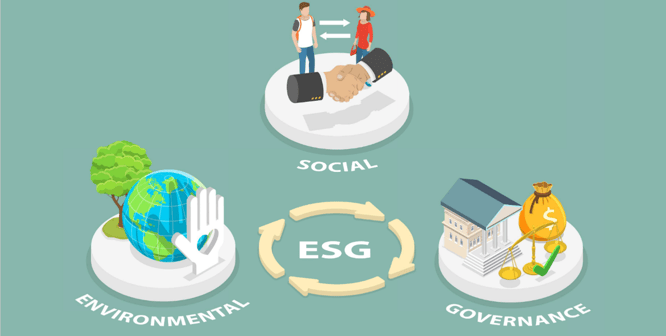Since 2007, banks and brokers are no longer allowed to sell a financial product without knowing someone's risk profile and having assessed his knowledge of the financial markets and his experience on the stock exchange. That guideline has been tightened up on August 2 with new rules, in which bankers or brokers are obliged to gauge someone's need for sustainable investments. Banks use the Environmental, Social, and Governance (ESG) criteria, a set of standards for a company's behavior used to screen potential investments.

But are those ESG criteria enough?
Sustainable Transformation Lab researcher Ewald Van den Auwelant sees opportunities for improvement. According to Prof. Dr. Wayne Visser those ESG-criteria are nonsense to begin with and here is why.
1. ESG criteria are often measured only by their impact on the company, not the other way around
"This is how you get bizarre situations where companies like Philip Morris and Exxon get good ESG ratings from MSCI, which in practice is completely wrong”, says Visser. In addition The ESG trend in investments is also misused by banks as a means of making a claim of sustainability. This creates a high risk of greenwashing.
2. The G in ESG gets too much attention
There should be much more focus on the real impact on the environment (the E of ESG). Governance stands for policy, but measuring a policy is not a good parameter. It is implausible to think that banks will only finance projects with a positive impact. But the least they can do is withdraw from financing harmful activities. Do no harm is the minimum they should have in mind. However, that implies saying "no" to many projects and products, and that is difficult. Big banks still make too much money from questionable and polluting activities.
3. Banks are very conservative
First, bankers and insurers estimate that they do not have enough data to assess ESG factors to evaluate companies on how far advanced they are with sustainability. According to Van Den Auwelant, it is misleading to suggest that extensive ESG data is not already available. No doubt, available ESG data needs to improve – and will improve in the next 5 years. What is currently lacking, is the framework around the sustainability criteria.
The practical implication of the European MiFID Directive is that banks or insurers who are behind the ESG curve – who have been slow to act on the sustainable investment trend over the past decades – will have to pay for ESG data to make good on their customers’ ESG preferences. And this is how it should be: the competitive forces of the market will reward first movers and speed innovation adoption among the rest.
Secondly, they have difficulty financing new business models, such as the circular economy, because they have little experience with them and cannot properly assess the risks. But if we want change, banks will have to learn how to do things differently. Every transition comes with risks. We need to make banks more accountable.
---
Would you like to explore this topic further? Take a look at the following news articles on which this blog post is based.
- Prof. dr. Wayne Visser talked about the ESG’s in Trends.
- 'L'Echo' featured Ewald Van den Auwelant discussing conservative banks.
Do you care to develop and implement sustainable transformation in your organization?



